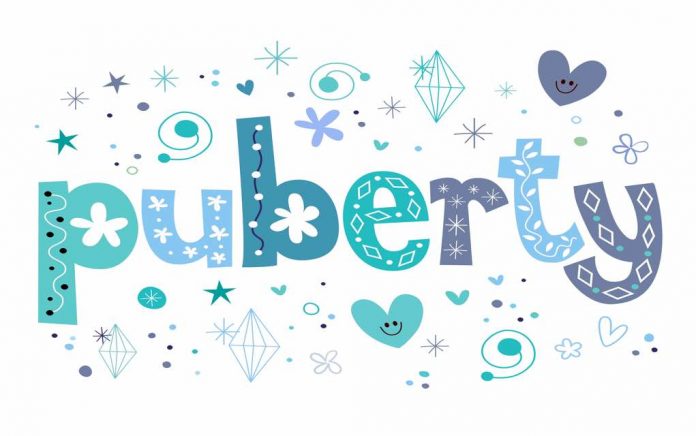
Even before young girls get “the talk” about menstruation, they should be introduced to the prologue, aka prepuberty or pre-pubescence: it’s good for them to be informed about the many changes that are taking place in their body that precede their first period, or menarche. Menstruation doesn’t happen overnight; there is a biological evolution that takes place in young girls, typically starting around their eighth birthday, that is part of the transformation, and it begins in the brain. This pre-puberty stage is a coming-out of the female hormones as the body gradually prepares for the ability to reproduce.
What happens before the first period
More specifically, the spark of prepuberty begins in the hypothalamus, an area of the brain that connects and works with both the endocrine and nervous systems. Among the activities under its control are appetite, emotions, sleep cycles, blood pressure, heart rate, digestive juices, and body temperature.
When different systems of the body send messages to the brain, the hypothalamus jumps into action and releases certain hormones into the bloodstream to keep a balance. To set puberty into motion, the hypothalamus secretes gonadotropin-releasing hormone (GnRH). This hormone travels to the pituitary gland (also located in the brain), which in turn releases two additional puberty hormones called follicle-stimulating hormone (FSH) and luteinizing hormone (LH). The journey has begun.
Read about 7 simple ways to balance hormones naturally
The hormones make their way to the ovaries and initiate the maturation and release of eggs. FSH stimulates the production of estrogens, the hormones responsible for the development of secondary female characteristics, which also are part of pre-puberty.
Other pre-puberty happenings
A variety of bodily and emotional changes are part of pre-puberty and are an opportunity for mothers and daughters to come together and talk about those changes.
Body growth. Beginning around age 9, girls begin to experience some growing spurts. The most growth, however, typically occurs about six months before menarche. This is when you will likely see some accumulation of fat around the thighs and hips and in the breasts. Arms, legs, hands, and feet also tend to grow larger at this time as well.
Body odor. Hormonal changes trigger body odor, which can be embarrassing for young girls if they do not understand this is natural and can be addressed with some changes in hygiene habits.
Mood swings. From pouty to pushy and delightfully pleasant, a young girl’s moods can run the entire gamut as her pre-pubescence hormones work to get into synch. Moodiness, oversensitivity, and spur-of-the-moment crying are all natural, albeit challenging for all involved at the time.
Read about how to help your depressed teen feel better naturally
Hair growth. The adrenal glands produce hormones called adrenal androgens, which trigger the growth of underarm and pubic hair. Pubic hair usually appears first and is coarse and curly, while underarm hair typically appears later.
Breasts. For most girls, breast growth is the first sign of puberty. This growth begins as firm, small, tender lumps (buds) under one or both nipples. The lumps gradually grow larger and less firm over the next year or two. At some point during this transformation, young girls often get their first training bra.
Vaginal discharge. Weeks to months prior to menarche, girls will experience a white discharge from the vagina.
Menarche. The culmination of puberty is a girl’s first period, which generally arrives between the ages of 9 and 16.
Months and perhaps even a few years before girls hear the menstruation talk, they should be informed about the many bodily and emotional changes that lead up to menarche. An understanding of this transformational stage can make it easier to navigate through the process and celebrate it as an exciting new stage in their lives.
[Editor's Note: Many conventional feminine hygiene products which are marketed to teens contain toxic chemicals, fragrances and have plastic applicators that are bad for the environment. Our sponsor, Natracare, makes feminine hygiene products that are 100% organic cotton and chemical free. They also have a part of their website with information about getting your period. Mom can learn a lot here, too.]





